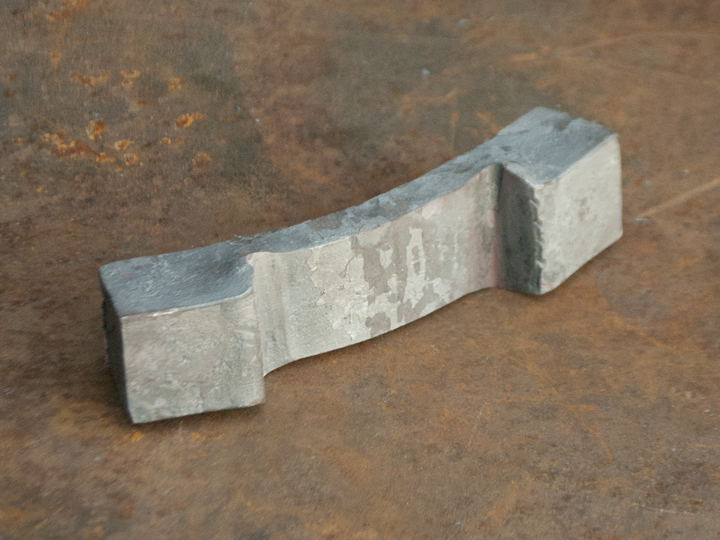
Viking Hammers Forged Like Axes?
On January 30, 2015 by jaustinLast year I came across a couple of images on the internet which showed tools recovered from the graves of Viking blacksmiths. In both cases there were hammers of a particular, one-sided design which nowadays is associated with blade smithing. When I saw the first picture, which Matt Stagmer posted to Facebook from the book “The Vikings”, I was immediately struck by the similarity of the hammer eyes to axe eyes formed by wrapping and forge welding. Owen Bush posted his own picture from Norway of the same set of tools (second picture). In this case there was even an axe with the same eye. Another picture of a recent find of Viking blacksmithing tools from a grave showed similar hammers, albeit with simpler, rectangular eyes (third picture):



Following a hunch I decided to see if I could devise a method of forging these styles of hammers using welding procedures borrowed from early axe construction. My criteria were that I should get similar hammer forms which showed no traces of the forge welding used to stick them together. They would have soft iron bodies and faces of high-carbon steel. In brief here is what I came up with:






It took about 4 tries to end up with a hammer which showed no seams. The essential point was to weld at a sizzling hot temperature (almost to the point of burning the iron) and reduce the body down quite a bit to the final cross section (I reduced it by a factor of 2). From the standpoint of a Viking blacksmith using bloomery iron, a hammer forged this way would have been refined in both the eye and body sections due to drawing down their cross sections -thus giving a better orientation of the slag inclusions. This would not necessarily have been the case for a hammer with a punched eye.
Very cool James…
Thanks for your comment Alan! I’m glad you like it.
What country was that gravesite in?
Howard – the grave was in Norway.
Geometrically, a striking resemblance to the Japanese bladesmithing hammers – the “dog head”. Great imagery! – will try it out in my smithy – so far I’ve been punching eyes – time to start wrapping – a true test of skill . Your “photo stories” are sooo helpful – thank You again. Greetings from a Carpathian smith.